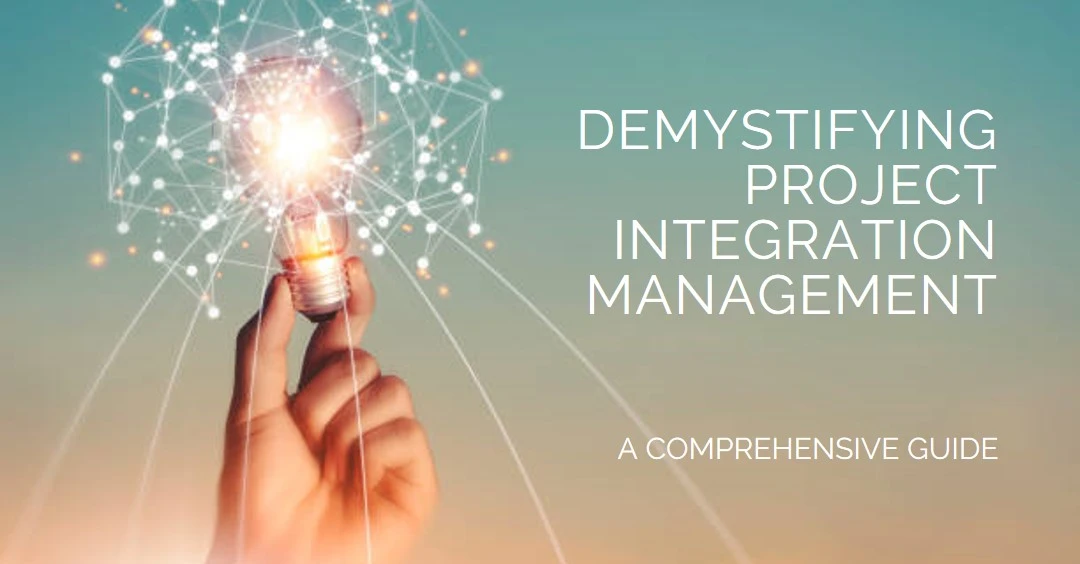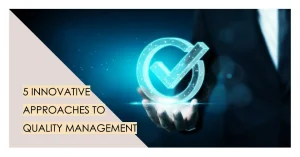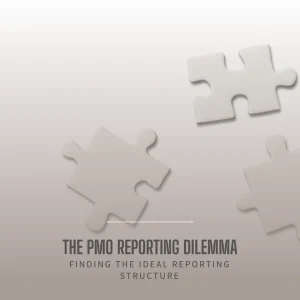I. Introduction
Hey there, fellow project management enthusiasts! Today, we’re diving into the fascinating world of project integration management. If you’ve ever found yourself overwhelmed by the sheer number of moving parts in a project, you’re not alone. That’s where project integration management comes into play – a crucial aspect of project management that helps us keep everything in check and ensures that all the pieces of the puzzle fit together seamlessly.
In this comprehensive guide, we’ll break down the concept of project integration management, discuss its importance in the realm of project management, and explore the key processes involved. By the time you’re done reading, you’ll have a solid understanding of how to effectively integrate and manage all aspects of your projects. So, buckle up and get ready for a deep dive into the world of project integration management!
In the upcoming sections, we’ll cover everything from the definition and objectives of project integration management to its relation with other project management knowledge areas. We’ll then delve into the key processes, sharing valuable insights on their purpose, inputs, outputs, and best practices. Finally, we’ll discuss the benefits of effective project integration management and reveal some tried-and-true strategies to ensure your projects run smoothly from start to finish.
Ready to embark on this exciting journey? Let’s get started!
II. What is Project Integration Management?
Before we dive headfirst into the nitty-gritty of project integration management, let’s take a moment to truly understand what it is and why it’s so important.
A. Definition
Project integration management is like the glue that holds a project together. It’s the process of coordinating all aspects of a project to ensure that everything works in harmony, from the initial planning stages to the final project closure. By overseeing the various elements of a project and making sure they are properly aligned, project integration management helps to maintain the delicate balance between scope, schedule, cost, quality, resources, and risk.
B. Objectives
The primary objectives of project integration management include:
- Ensuring a clear and cohesive project vision
- Establishing strong communication and coordination among all stakeholders
- Maintaining the project’s focus on achieving its goals and objectives
- Identifying and addressing any potential issues or conflicts that may arise during the project
- Facilitating the integration of various project management processes and practices
C. Relation to other project management knowledge areas
Project integration management has a unique position within the project management framework, as it encompasses and interacts with all other knowledge areas, such as scope, time, cost, quality, human resources, communications, risk, procurement, and stakeholder management. In essence, it acts as the bridge between these areas, ensuring that each one is effectively integrated and managed throughout the project’s lifecycle.
Now that we’ve covered the basics of project integration management, let’s dive deeper into the key processes involved. In the next section, we’ll explore each of these processes in detail, providing you with a comprehensive understanding of how they contribute to successful project integration management. Stay tuned!
III. Key Processes in Project Integration Management
Project integration management is composed of several crucial processes that, when executed effectively, help to ensure a project’s success. Let’s take a closer look at each of these processes and how they contribute to successful project integration.
A. Develop Project Charter
- Purpose The project charter is the foundation of your project, serving as the official document that authorizes the project’s existence and defines its purpose, goals, and objectives. It provides a clear direction for the project team and stakeholders and serves as a reference point throughout the project lifecycle.
- Key inputs and outputs To create a robust project charter, you’ll need inputs such as project requirements, business needs, and stakeholder expectations. Once completed, the project charter will outline the project’s purpose, objectives, high-level requirements, boundaries, assumptions, constraints, and key stakeholders.
- Steps to create a project charter a. Identify the project’s purpose, goals, and objectives b. Define the project scope, including boundaries and high-level requirements c. Identify key stakeholders and their roles and responsibilities d. Outline project assumptions and constraints e. Determine the project’s budget, timeline, and resources f. Obtain approval from relevant stakeholders
B. Develop Project Management Plan
- Purpose The project management plan serves as the blueprint for your project, detailing how the project will be executed, monitored, controlled, and closed. It integrates and consolidates all subsidiary plans, such as the scope, schedule, cost, quality, and risk management plans, into a cohesive whole.
- Key inputs and outputs To develop a comprehensive project management plan, you’ll need inputs from the project charter, stakeholder requirements, and subsidiary plans. The completed project management plan will outline the project’s approach, processes, tools, and techniques to be used throughout the project lifecycle.
- Components of a project management plan a. Scope management plan b. Schedule management plan c. Cost management plan d. Quality management plan e. Human resource management plan f. Communications management plan g. Risk management plan h. Procurement management plan i. Stakeholder management plan
C. Direct and Manage Project Work
- Purpose This process involves executing the project management plan and producing the project’s deliverables. It’s where the project team puts their expertise to work, transforming plans into tangible results.
- Key inputs and outputs Inputs for this process include the project management plan, approved change requests, and enterprise environmental factors. Outputs include the project’s deliverables, work performance data, and issue logs.
- Techniques for managing project work a. Task delegation and resource allocation b. Progress monitoring and reporting c. Quality control and assurance d. Issue and risk management e. Change management
D. Monitor and Control Project Work
- Purpose Monitoring and controlling project work involves tracking, reviewing, and regulating the project’s progress to meet performance objectives. This process helps identify variances and potential issues, allowing for timely corrective actions and ensuring the project stays on track.
- Key inputs and outputs Inputs include the project management plan, work performance data, and issue logs. Outputs consist of work performance reports, change requests, and updates to the project management plan and project documents.
- Techniques for monitoring and controlling project work a. Performance measurement and analysis b. Variance analysis c. Earned value management d. Risk monitoring and control
E. Perform Integrated Change Control
- Purpose This process focuses on reviewing and approving change requests, ensuring that any proposed changes are thoroughly evaluated for their impact on the project’s scope, schedule, cost, and quality.
- Key inputs and outputs Inputs include the project management plan, work performance reports, and change requests. Outputs consist of approved or rejected change requests, change log updates, and potential updates to the project management plan and project documents.
- Change control process a. Identify and document proposed changes b. Evaluate the impact of the changes on the project’s objectives c. Obtain approval or rejection from relevant stakeholders or the change control board d. Implement approved changes and update project documentation e. Communicate the changes to the project team and stakeholders
F. Close Project or Phase
- Purpose Closing a project or phase involves finalizing all project activities, delivering the final product or service, and releasing project resources. It also includes conducting a post-project review to identify lessons learned and best practices for future projects.
- Key inputs and outputs Inputs for this process include the project management plan, project documents, and accepted deliverables. Outputs consist of final product or service, lessons learned documentation, and project closure reports.
- Steps to close a project or phase a. Confirm the completion of all project deliverables b. Obtain acceptance from stakeholders for the final product or service c. Conduct a post-project review to identify lessons learned and best practices d. Update project documentation, including the lessons learned repository e. Release project resources and close any open contracts f. Archive project documents for future reference
- Now that we’ve explored the key processes involved in project integration management, you should have a clear understanding of how they work together to keep your project on track and moving towards success. In the next sections, we’ll discuss the benefits of effective project integration management and share some best practices for ensuring your projects run smoothly from start to finish. Stay tuned!
IV. Benefits of Effective Project Integration Management
By now, you’ve probably realized the vital role project integration management plays in ensuring project success. But let’s take a moment to appreciate the specific benefits that come with effectively implementing these processes in your projects.
A. Improved communication and coordination
Project integration management fosters a culture of open communication and collaboration among team members and stakeholders. By establishing clear communication channels and facilitating regular updates, everyone stays in the loop and can work together more effectively.
B. Greater project efficiency
When all the elements of a project are carefully integrated and managed, the project runs more smoothly and efficiently. By identifying potential issues and conflicts early on, you can address them proactively and minimize their impact on the project’s schedule and budget.
C. Enhanced risk and change management
Effective project integration management allows for better identification, assessment, and management of risks and changes throughout the project. This leads to more informed decision-making and improved adaptability, ensuring your project can weather any unforeseen challenges.
D. Increased stakeholder satisfaction
When a project is well-integrated, it’s more likely to meet stakeholder expectations and achieve its objectives. By keeping stakeholders informed and involved throughout the project lifecycle, you can build trust and foster a sense of ownership, ultimately leading to increased satisfaction with the project’s outcomes.
So there you have it – the powerful benefits of effective project integration management! But how can you ensure that your projects reap these rewards? In the next section, we’ll share some best practices that will help you master the art of project integration management. Let’s dive in!
V. Best Practices for Successful Project Integration Management
Now that we’ve explored the benefits of effective project integration management, let’s dive into some tried-and-true best practices that will help you unlock the full potential of this powerful project management approach. Follow these strategies, and you’ll be well on your way to project success!
A. Establish a strong project management team
Your project management team is the backbone of your project, so it’s crucial to assemble a team of skilled, dedicated, and experienced professionals. Look for individuals with diverse backgrounds and expertise who can bring fresh perspectives and contribute to the project’s success.
B. Maintain open and transparent communication
Effective communication is key to successful project integration management. Foster a culture of openness and transparency by encouraging team members and stakeholders to share their thoughts, concerns, and ideas. Make sure to provide regular project updates, and establish clear channels for communication to ensure everyone stays informed and on the same page.
C. Regularly review and update the project management plan
Your project management plan is a living document that should be continually reviewed and updated as the project progresses. By regularly revisiting the plan, you can identify any deviations from the original objectives, address potential issues, and make informed decisions to keep the project on track.
D. Use project management software and tools
Leveraging project management software and tools can greatly improve your project integration management efforts. Look for tools that offer features such as task tracking, resource management, scheduling, and reporting. These tools can help streamline your processes, promote collaboration, and provide valuable insights into the project’s performance.
And there you have it – best practices to help you excel in project integration management! By incorporating these strategies into your project management approach, you’ll be well-equipped to tackle the challenges of complex projects and deliver successful outcomes every time.
Now, it’s time to wrap up our comprehensive guide to project integration management. Let’s recap what we’ve learned and emphasize the importance of this crucial aspect of project management.
VI. Conclusion
Congratulations! You’ve made it to the end of our comprehensive guide on project integration management. By now, you should have a solid understanding of what project integration management is, its importance in the realm of project management, and the key processes involved.
To recap, project integration management is the glue that holds your project together, ensuring that all aspects work in harmony to achieve your project’s goals and objectives. By effectively integrating and managing the various project elements, you can improve communication and coordination, enhance project efficiency, and ultimately deliver successful project outcomes.
In this guide, we’ve covered the key processes involved in project integration management, including developing a project charter, creating a project management plan, directing and managing project work, monitoring and controlling project work, performing integrated change control, and closing the project or phase. We’ve also explored the benefits of effective project integration management and shared best practices to help you achieve project success.
As you embark on your next project, remember the importance of project integration management and the strategies we’ve discussed here. By putting these principles into practice, you’ll be well on your way to managing projects like a pro and delivering outstanding results for your organization.
Thank you for joining us on this exciting journey through the world of project integration management! We hope you’ve found this guide informative, engaging, and helpful. Now, go forth and conquer your projects with confidence!
To find out how Artificial Intelligence is changing the Project Management landscape, you have enjoy reading this article https://www.shaunstoltz.com/did-artificial-intelligence-just-change-everything-about-project-management/
Find out more about Shaun Stoltz https://www.shaunstoltz.com/about/
This post was written by an AI and reviewed/edited by a human.



